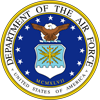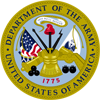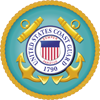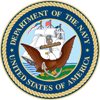|
Coast Guard AdmiralO-10 Flag Officer, U.S. Coast Guard |
No rank |
Coast Guard Ranks » Admiral Rank • ADM Pay • ADM Rank History
History of the Coast Guard Admiral Rank
A Admiral is a Flag Officer in the United States Coast Guard at DoD paygrade O-10.
The term 'admiral' comes from the Arabic amir-ar-bahr, meaning 'commander of the seas'. The rank was first used in the US Navy in 1866. The first full Admiral of the US Coast Guard was Admiral Russell R Waeshe, appointed as such on 4 April 1945 to head the organisation as Commandant. Initially, the US Revenue Cutter Service, a predecessor of the Coast Guard, was headed by a Chief with the rank of Captain. In 1908, the office of Captain-Commandant was established, with the rank of Commodore. By 1923, the recently formed US Coast Guard was headed by a Commandant, with the rank Rear-Admiral. In terms of Public Law 86-474, 14 May 1960, all Coast Guard Commandant would henceforth automatically be appointed as Admirals for the duration of their term in office.
Want to learn more? Read about the Coast Guard's Admiral rank on Military-Ranks.org.
History of the Coast Guard
The Coast Guard has changed names several times over its 200+ year history, but it is largely the same organization as it was in 1790 as the Revenue Marine. Uniforms, culture, and professions are very similar to the Navy, but the mission is different. While the Navy ensures freedom of navigation internationally, the Coast Guard does so for our nation's coasts through vessel inspections, law enforcement, drug and migrant interdiction, maintenance of navigation aids, environmental protection and research, ice operations, and search-and-rescue. Sailors of the Navy and Coast Guard have a high respect for each other, knowing that one can do what the other cannot.







































































































































